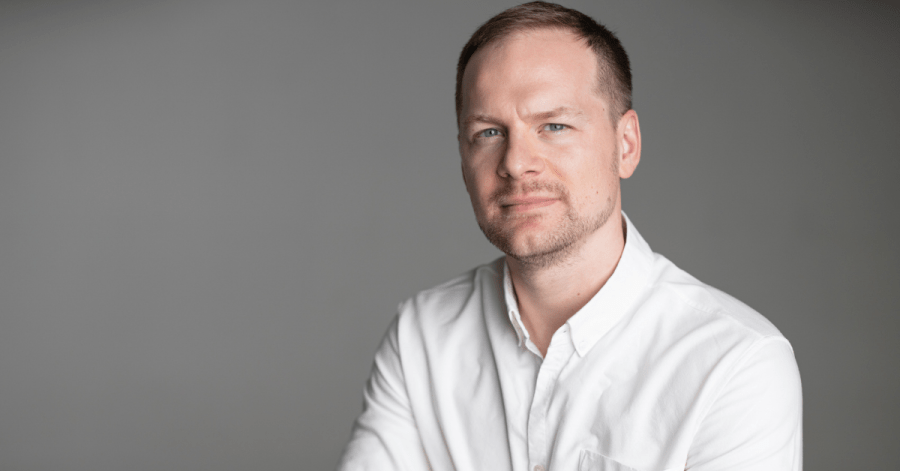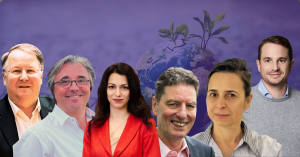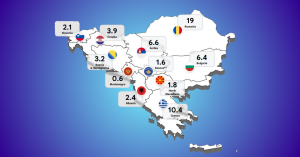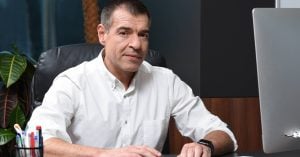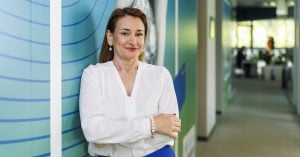As single-use plastics are being phased out in the European Union – sustainable alternatives such as compostable packaging for food and retail industries are gaining momentum. For companies with deep roots in the plastic manufacturing sector, this can be a challenge, as well as an opportunity to pivot. Based in Romania, industrial group Promateris, a producer of biodegradable and compostable packaging, is a great example of how a company can transform its operations in order to build a sustainable business model, aligned with European targets.
More than 60 years ago, the company started with local manufacturing expertise in chemical engineering. In the last few years, it has transitioned from plastic to bioplastic, investing in the latest technologies and R&D alliances to become a sustainable packaging producer.
As it turns out, transitioning to a sustainable business model can be profitable, attract investments, and bring new opportunities for growth in the long run. In 2021, the group’s revenues increased by 62% to 37.9 million euro; for 2022, they estimate revenues of 47.7 million euro and profits of 4.3 million euro.
In the next five years, Promateris aims to invest an additional 15 million euro in projects that follow the principles of the Green Deal. In 2022, they will start the production of corn starch packaging raw material. This will be financed through a grant of 744K euro from Innovation Norway, within the “SMEs Growth Romania” program.
Additionally, they will intensify the M&A activity by acquiring local or regional companies with a sustainability component, in order to strengthen Promateris’ position in Central and Eastern Europe as a leading producer of bio-based and compostable bags.
To learn more about what it takes to transition to a sustainable business model in the packaging industry, The Recursive talked to Tudor Georgescu, CEO at Promateris, a position he has held since 2015 after previously serving as a Sales and Marketing Executive for the group.
The Recursive: What are some best practices to follow when undergoing a transformation process as a business, especially with sustainability in mind?
Tudor Georgescu: I believe there is no one size fits all recipe when it comes to transitioning to a more sustainable business model. The first and most important step would be for organizational leaders to have a growth mindset, to perceive sustainability as an opportunity and not as a risk. There are so many great examples of companies who took bold decisions, which had great outcomes, both from an environmental and economical standpoint.
When it comes to steps, I think it’s very important to keep an open mind and to always be curious about what other companies are doing, what new developments are available on the market, what sustainability options exist on the market.
At the same time, it’s equally important to look inside the company, to understand what are the things that can be done better and how those changes can impact the company’s operations.
After these two steps are completed, a list of things that can be improved should be now on the table and the company can start looking around to identify partners that would help them in building an ecosystem in order to facilitate the transition.
What were the most difficult and the most rewarding aspects of the process?
I observed there are two types of leaders: the leader that believes in sustainability and its importance and the leader who doesn’t but decides to go through the process forced by circumstances. These circumstances may vary from legislation to public pressure, employee initiatives, etc. The second category sees sustainability through the lens of disruption and risk and usually associated it with increased expenses. I think this is the most difficult scenario for a company’s successful transition to a sustainable business model or even to implementing a sustainability strategy.
I think the best scenario is when a leader sees sustainability actions through the lens of growth and opportunity, development and taking things to a new level.
The most rewarding aspect is the creation of an ecosystem of partners and stakeholders with whom you share the same vision, you work towards the same goal. Even though the results are tangible, the gratifying results are rather immaterial.
What did the transition require in terms of infrastructure development and resource investment?
Our case is a bit special, since we are a production company who manufactures products that have a sustainability component, implying that sustainability is infused in the entire value chain: from R&D to product design, raw material manufacturing or operations.
Between 2018-2021, we invested more than 10 million euros in our factory (Ed.note in Buftea, a small city in the Ilfov county), where we produce bio-based and compostable packaging. As I mentioned before, our transition implied changes at business plan level: investments in R&D and the development of a new line of products, and not only at operational level.
At the same time, we focused a lot on eco-design in order to offer products for circular economy, meaning that they are produced from renewable resources and can be re-introduced infinitely in the production-consumption-recovery loop.
What impact did switching from plastics to bioplastics manufacturing bring to the business, both economically and in terms of environmental footprint?
Our company changed a lot during the past years: from our management team, to our vision for the future, to our lines of products and to the way we conduct our operations. In the past years, Promateris started on an accelerated growth path, a trend that we intend to also maintain in the future.
In terms of the environmental footprint, we made significant changes and I will mention here just a couple of them. First, we stopped entirely the production of polyethylene and we replaced it with compostable packaging made of bio-based renewable raw materials (corn-starch packaging). Then, we also installed a line dedicated to the recycling of our bio-based industrial waste, achieving a rate of 100% in recycling and re-use in the production process. You can read more about this in our ESG report.
So far, how far has the packaging industry in Romania as a whole adapted to the green transition requirements? What is needed to further surpass existing challenges?
The packaging market is a dynamic one, impacted by many factors, but mostly by legislation and consumer pressure. This is why packaging producers invested in developing alternatives with a reduced carbon footprint.
I would say that 5 years ago compostable packaging was mostly unknown to the public. Now, more and more people are aware of the fact that there are better alternatives to single use plastic packaging.
Romania has made important progress regarding legislation, thus aligning national policies to EU regulations.
At the same time, the biggest challenge we see is the fact that the legislation is not respected by everyone; we believe this to be a place where a lot of improvements can be made.
What are the company’s growth plans in 2022, and further?
We plan to invest in developing new lines of products and to also address more clients in the CEE region. We also plan to continue our investments in our proprietary R&D and to develop new products that are environmentally performant.
At the same time, we are starting to install a photovoltaic system at our factory, thus reducing the amount of traditional energy used in the production process.

